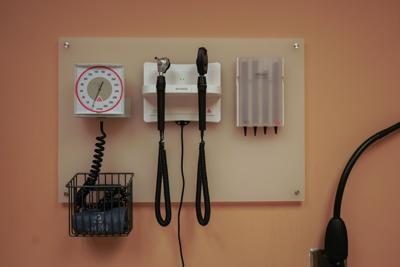Doctors providing comprehensive family medicine in Ontario are poised to get a new compensation deal from the province┬áÔÇö the first revamp of their payment structure in almost 20 years.
The Ford government and the Ontario Medical Association are close to finalizing a deal that will update the compensation model for doctors working in a family health organization, a move that will affect about 6,500 family physicians in the province.
The proposed deal comes amid a primary care crisis that has left two million Ontarians without a family doctor. Both the province and the OMA say the updated model will encourage more doctors to practise comprehensive family medicine┬áÔÇö and prevent others from fleeing the profession.
ÔÇťFamily doctors are going to be better compensated for the work of being a family doctor,ÔÇŁ said Kimberly Moran, CEO of the OMA, which represents roughly 43,000 doctors, medical students and retired physicians.
A study published Tuesday found that while there are now more family doctors practising here,
The updated model ÔÇö called FHO+ ÔÇö┬árecognizes that practising comprehensive family medicine has changed in recent years, with administrative tasks taking up more of a doctorÔÇÖs time. It will allow doctors to bill for clinical and administrative tasks, such as such as charting, reviewing test results and filling out forms.
Currently, doctors are not compensated for most of these tasks and the growing administrative burden has led to burnout and pushed a growing number away from the profession. According to the Ontario College of Family Physicians, doctors spend 19.5 hours a week on average on administrative work.
The lack of compensation for this behind-the-scenes clinical administration was among the top concerns for family doctors, Moran said.
ÔÇťThis model recognizes the additional workload that theyÔÇÖre carrying,ÔÇŁ she said.
FHO+ is an update to the current family health organization model, in which doctors are paid through capitation. This means doctors receive payment from the government determined by the number and complexity of patients on their roster. In a family health organization, doctors can also bill OHIP for some services.
In Ontario, about 6,500┬áphysicians work in a family health organization, according to the OMA. A spokesperson for Health Minister Sylvia Jones called a family health organization ÔÇťthe most widely adopted primary care model in Ontario.ÔÇŁ Ontario has a number of family medicine payment models, including fee-for-service, which is not a part of the proposed deal.┬á┬á
Among the updates, the FHO+ model opens additional spaces for doctors to join family health organizations. Both the OMA and the government say this will increase access to comprehensive primary care.
Ema Popovic, Jones’s spokesperson, said in a statement that FHO+ includes bonuses to encourage family health organizations to enrol new patients, while also strengthening incentives for after-hours care, helping more patients get access to their family doctor.
ÔÇťThe modernized model intends to retain current physicians, attract new ones, increase patient enrolment, and reduce administrative burdens for physicians,ÔÇŁ Popovic said. She noted investments in FHO+ will help the provinceÔÇÖs Primary Care Action Plan, which pledges to connect every Ontarian to a primary care provider by 2029.
A queue for 500 openings for a new family doctor in Walkerton leads to elation and
Negotiations between the Ministry of Health and the OMA are ongoing, with arbitration expected to wrap up in the fall. Moran said the arbitrator is working through a few final details, but that the majority of FHO+ has been agreed upon and will go a long way in encouraging family doctors to offer comprehensive, longitudinal care.
ÔÇťWe believe this will attract more doctors to the profession and lead to more doctors wanting to stay,ÔÇŁ she said.





























To join the conversation set a first and last name in your user profile.
Sign in or register for free to join the Conversation